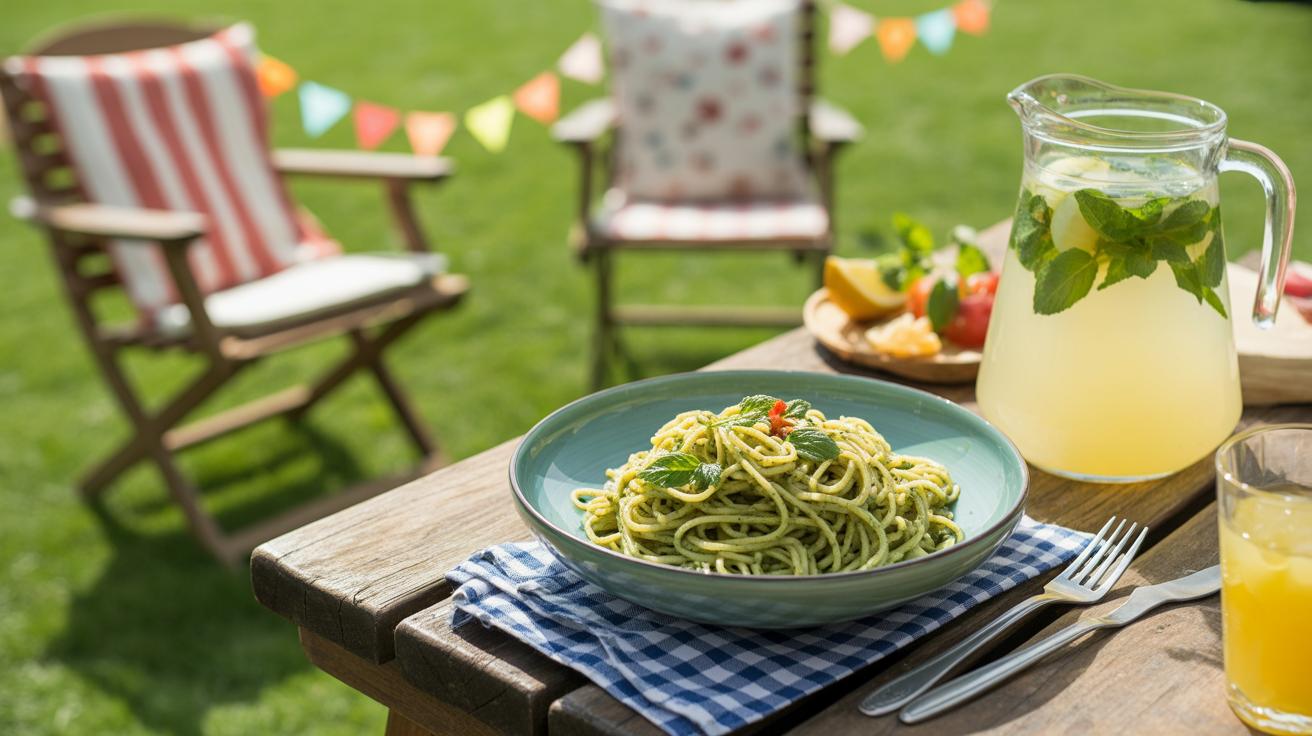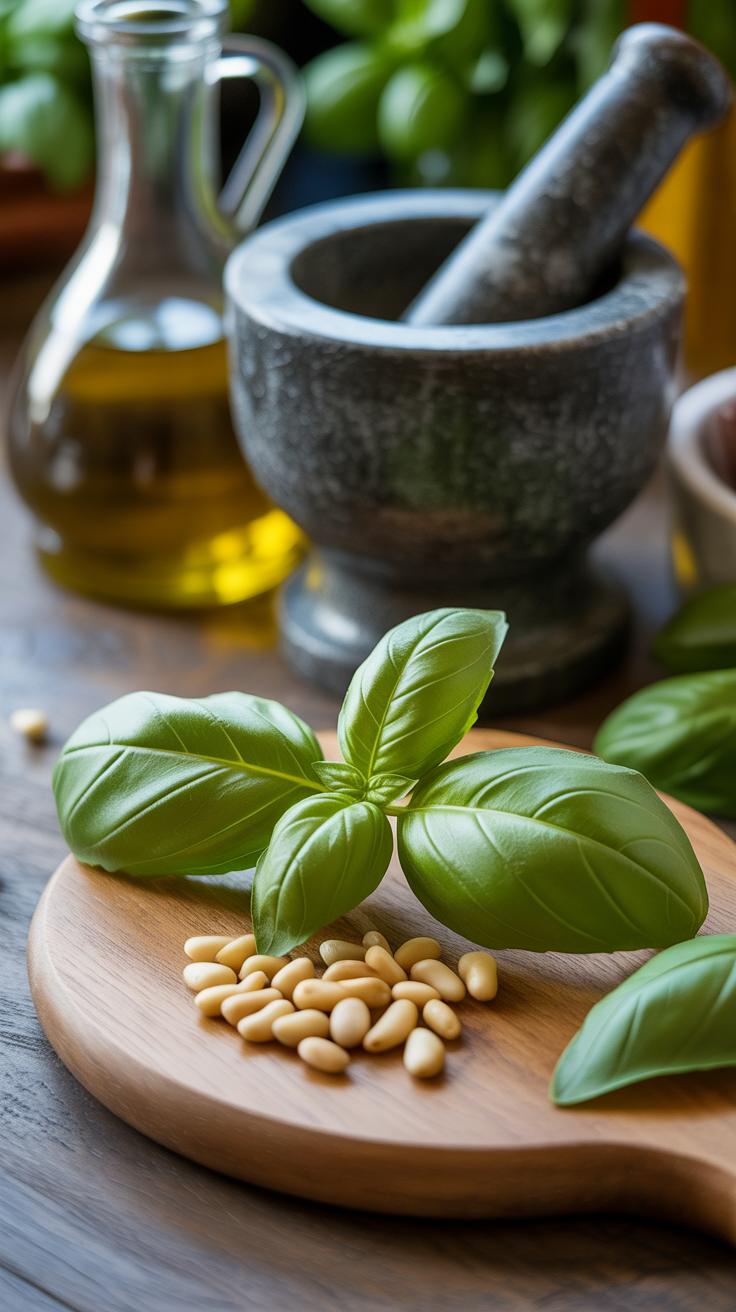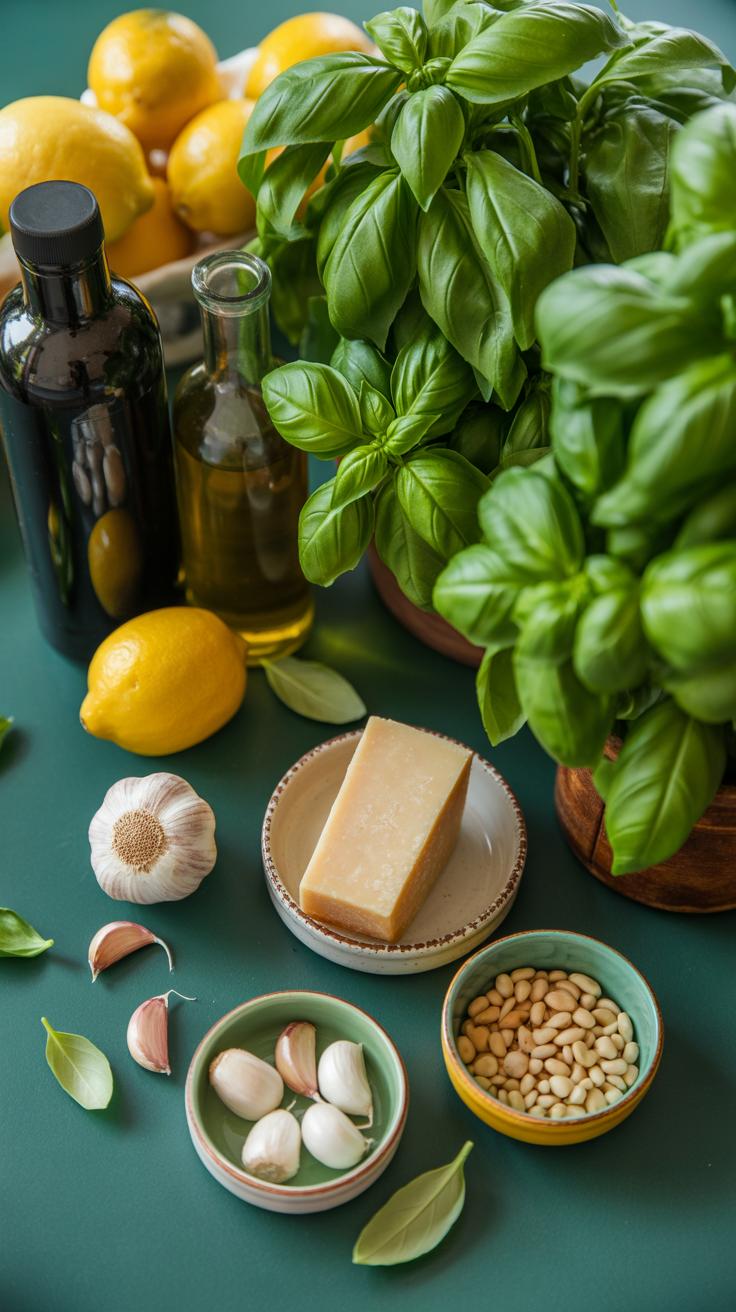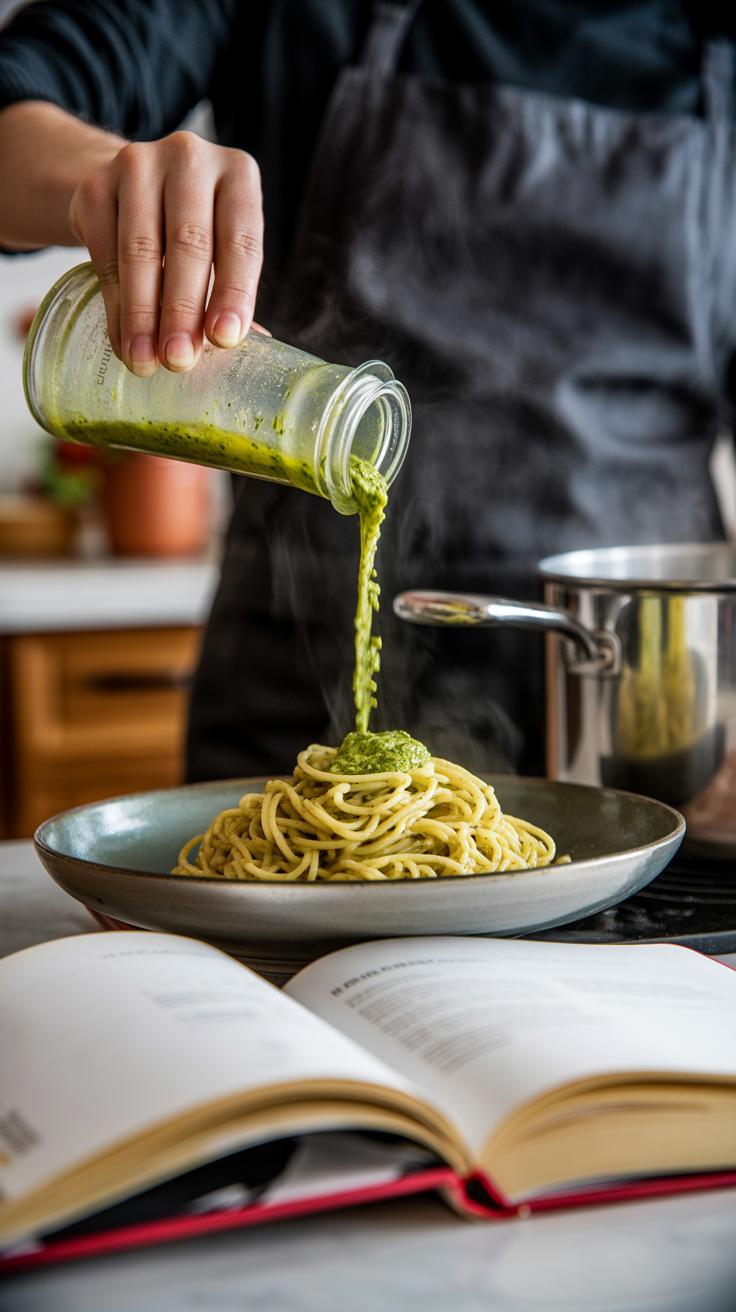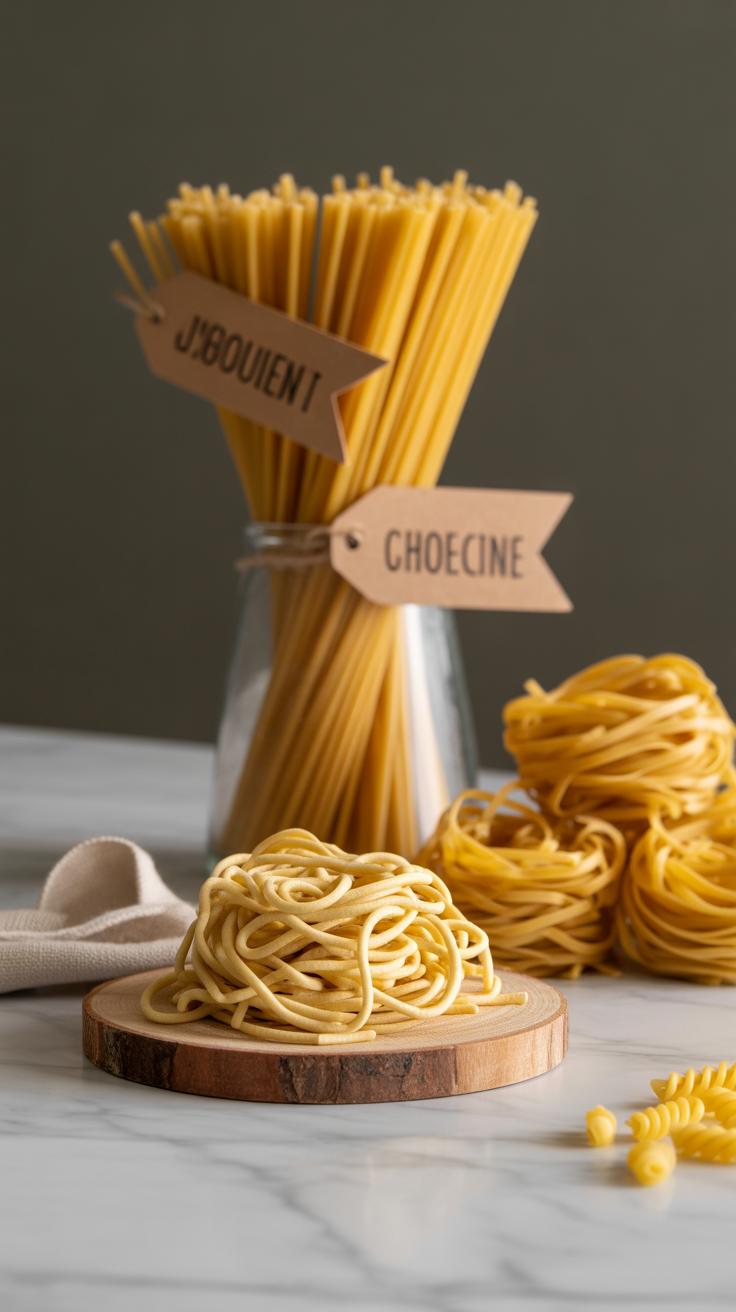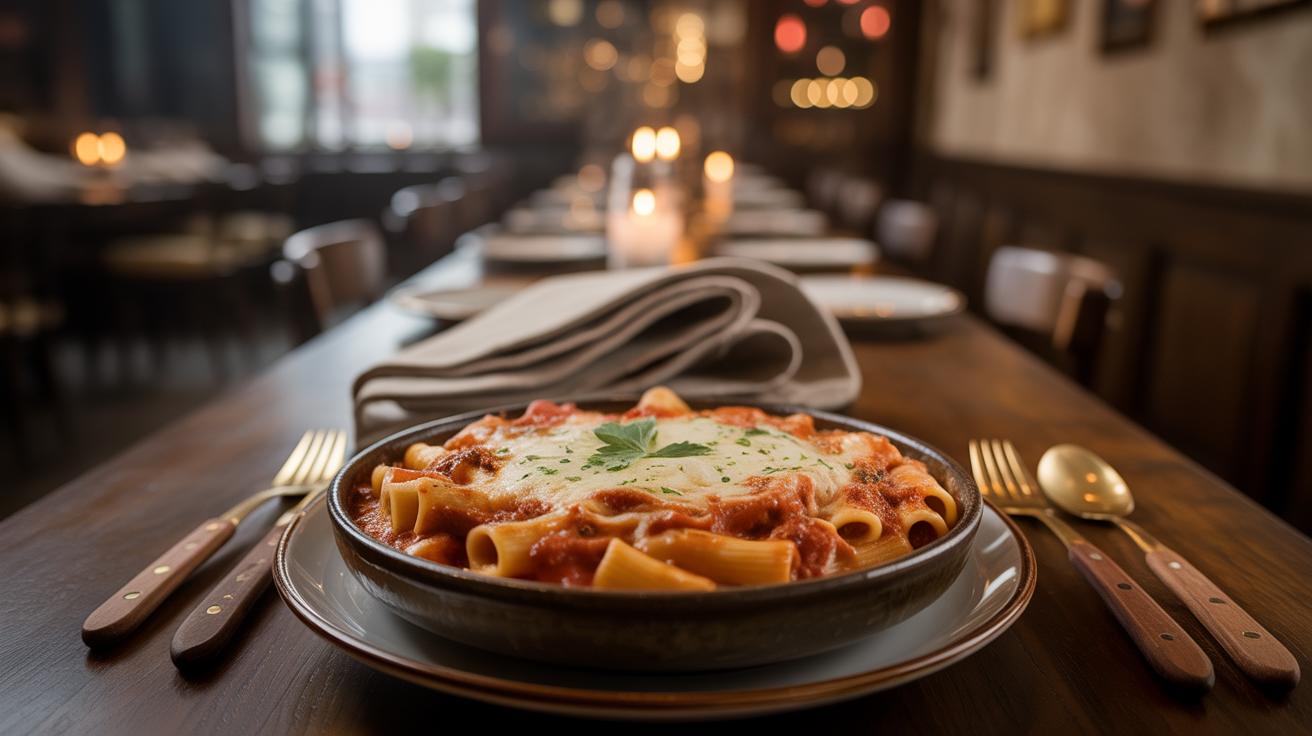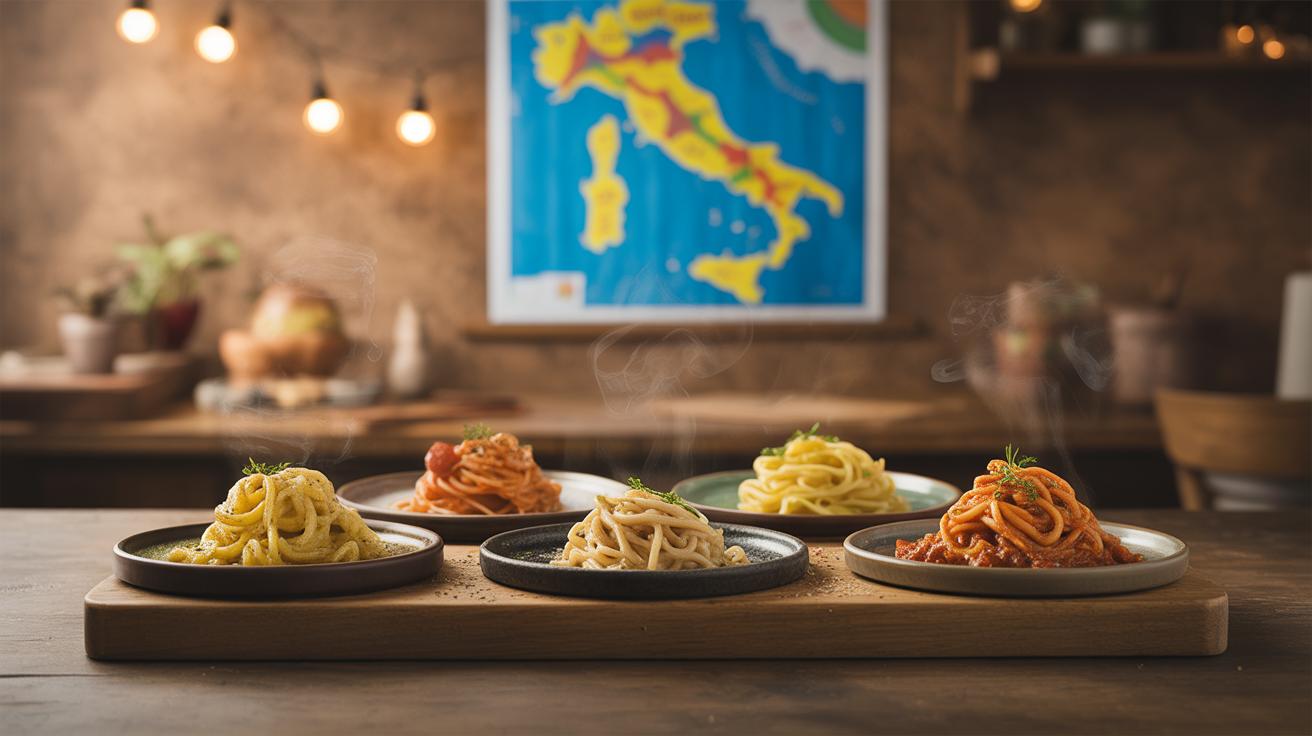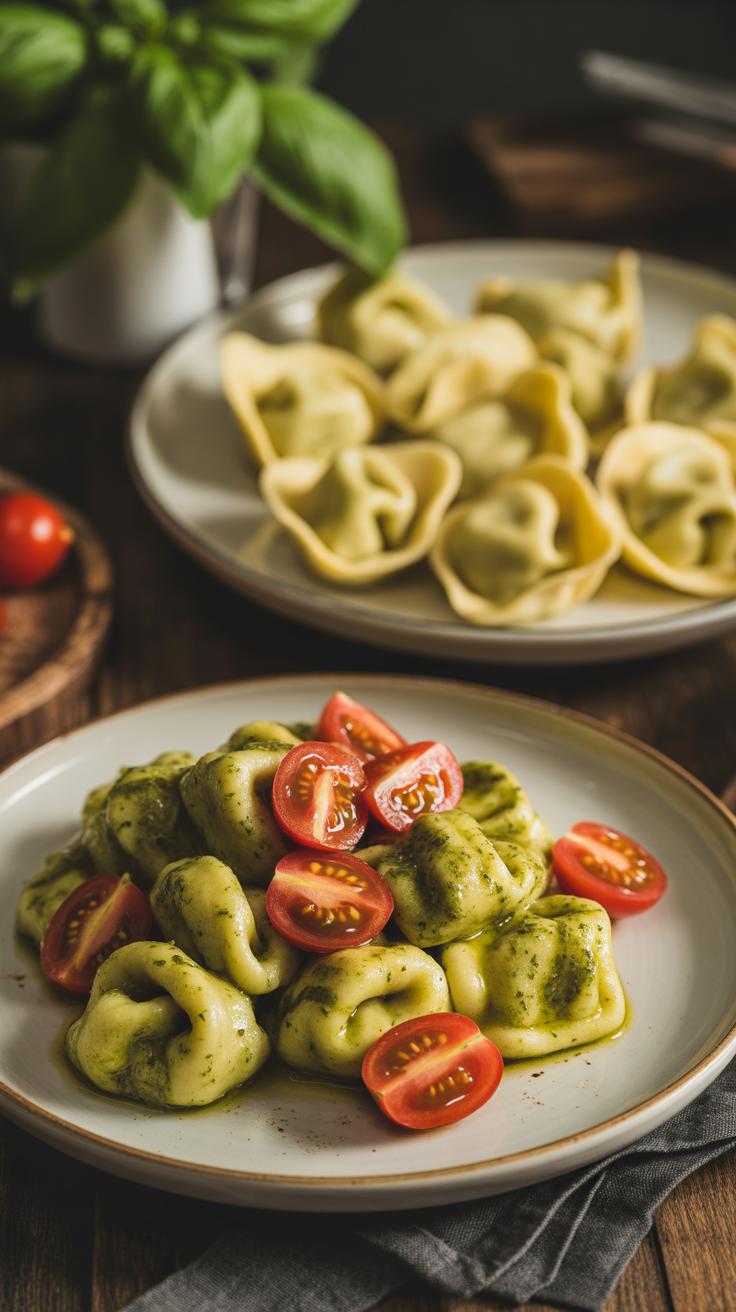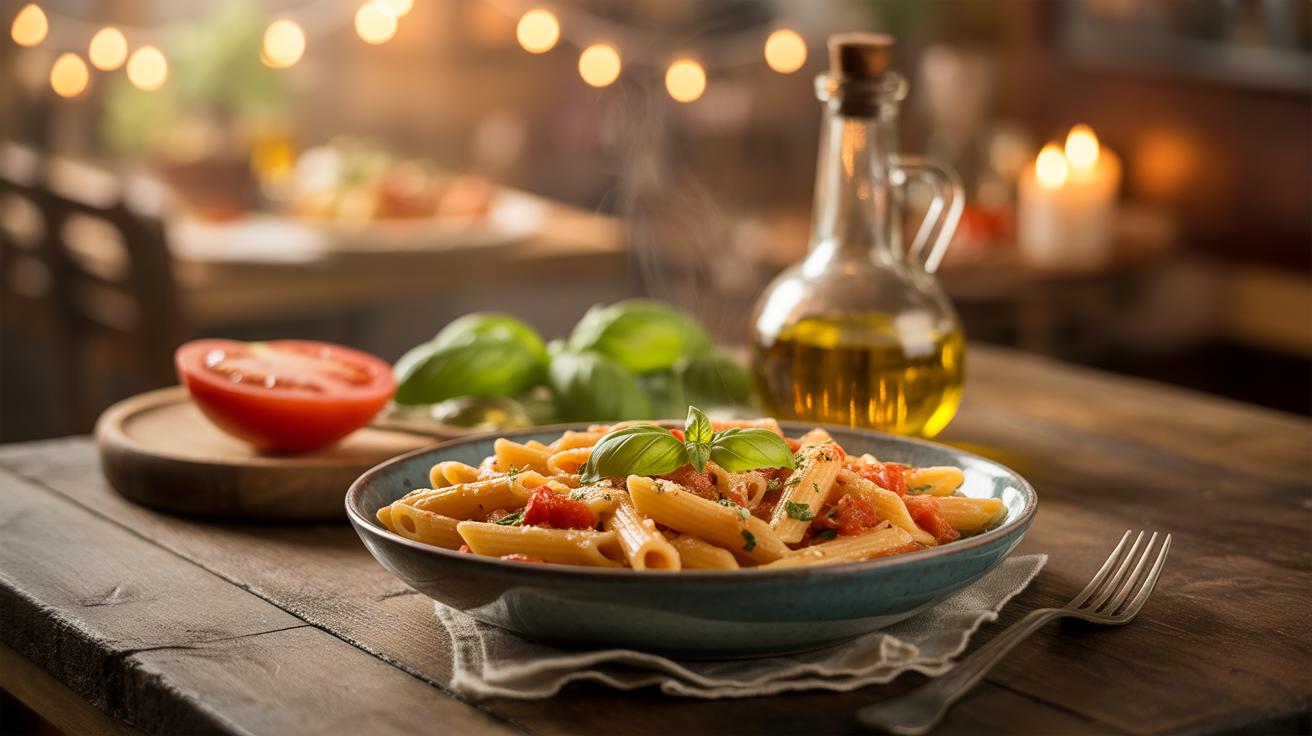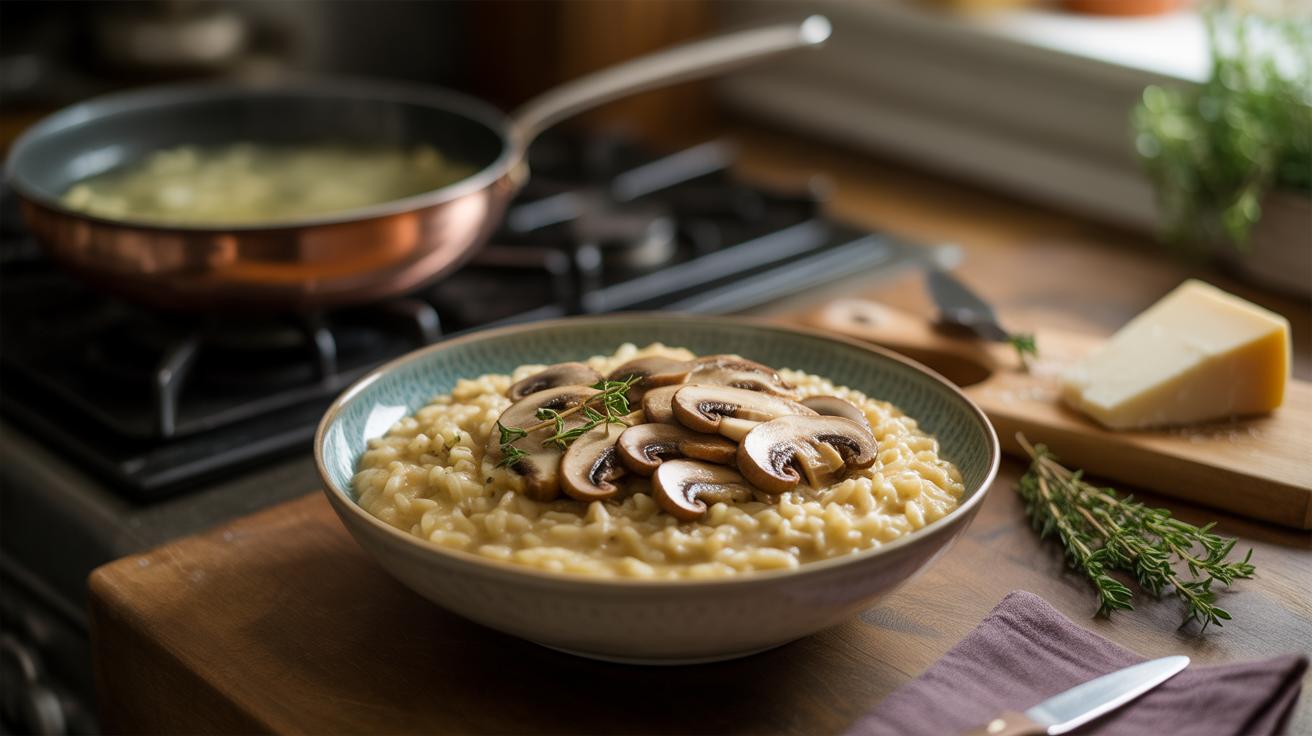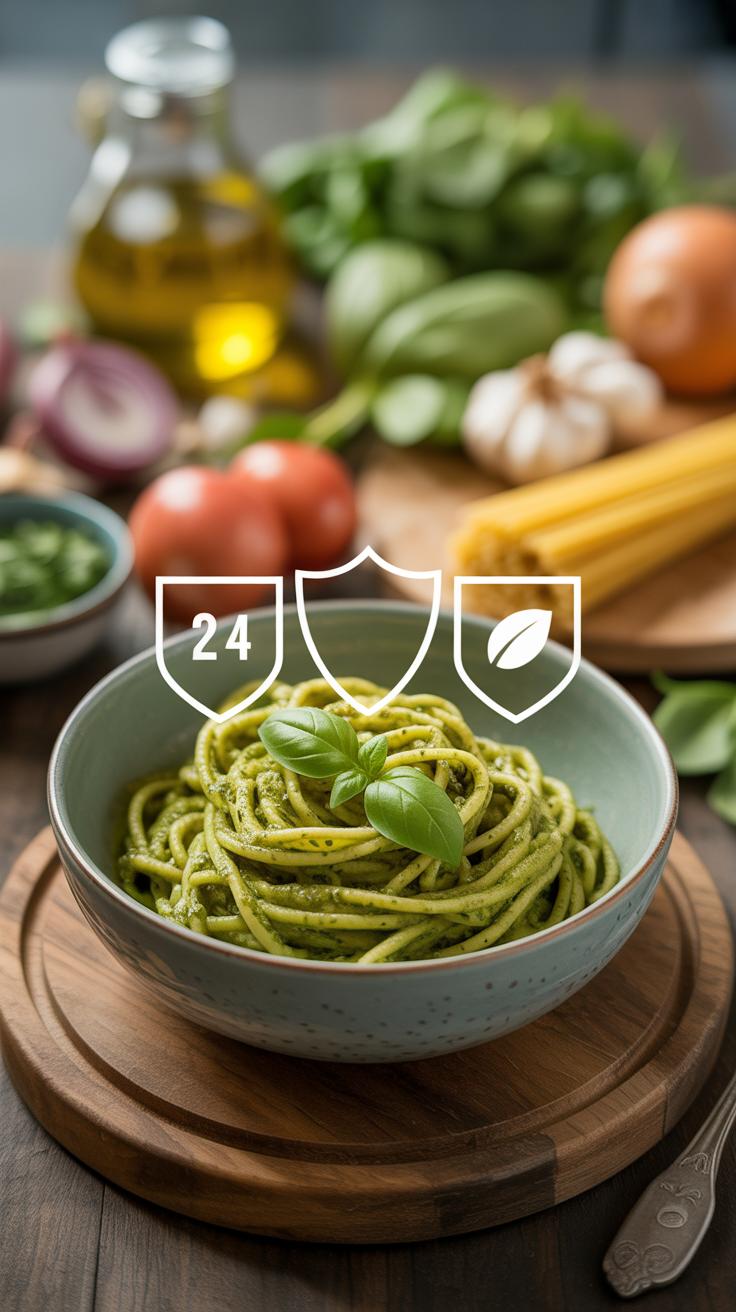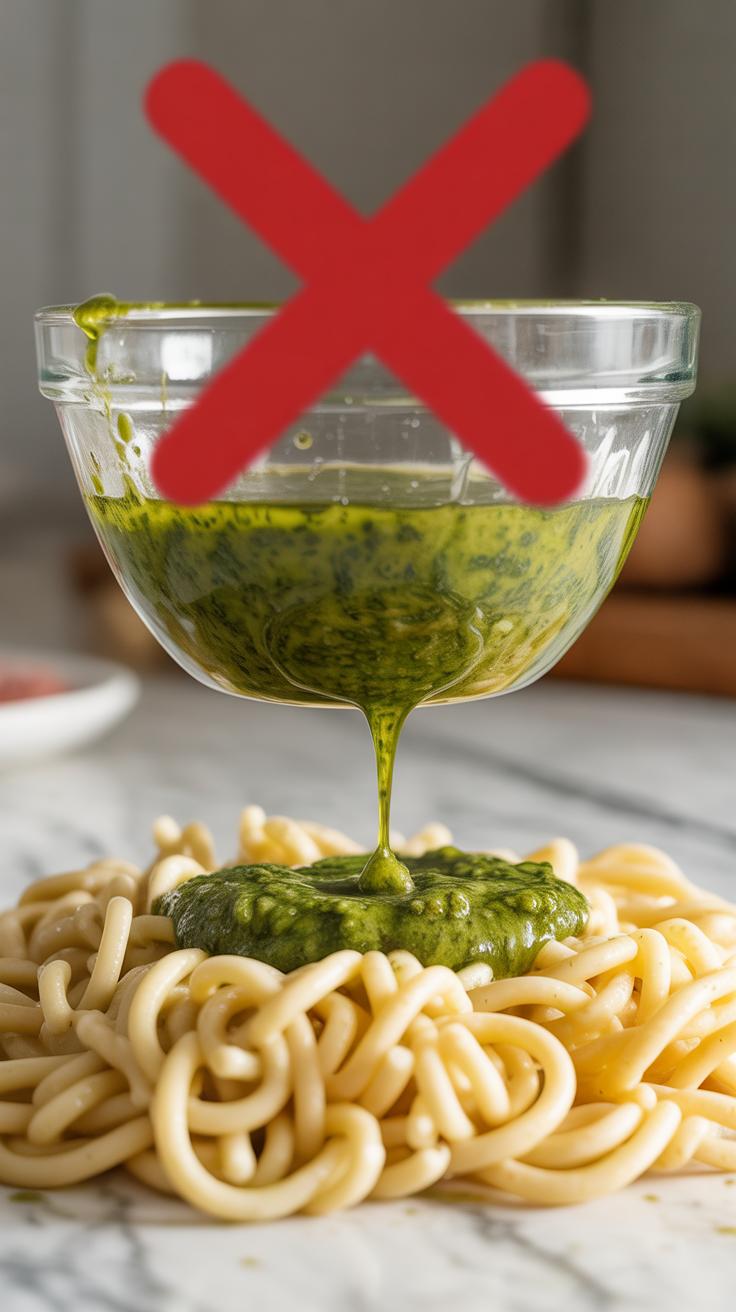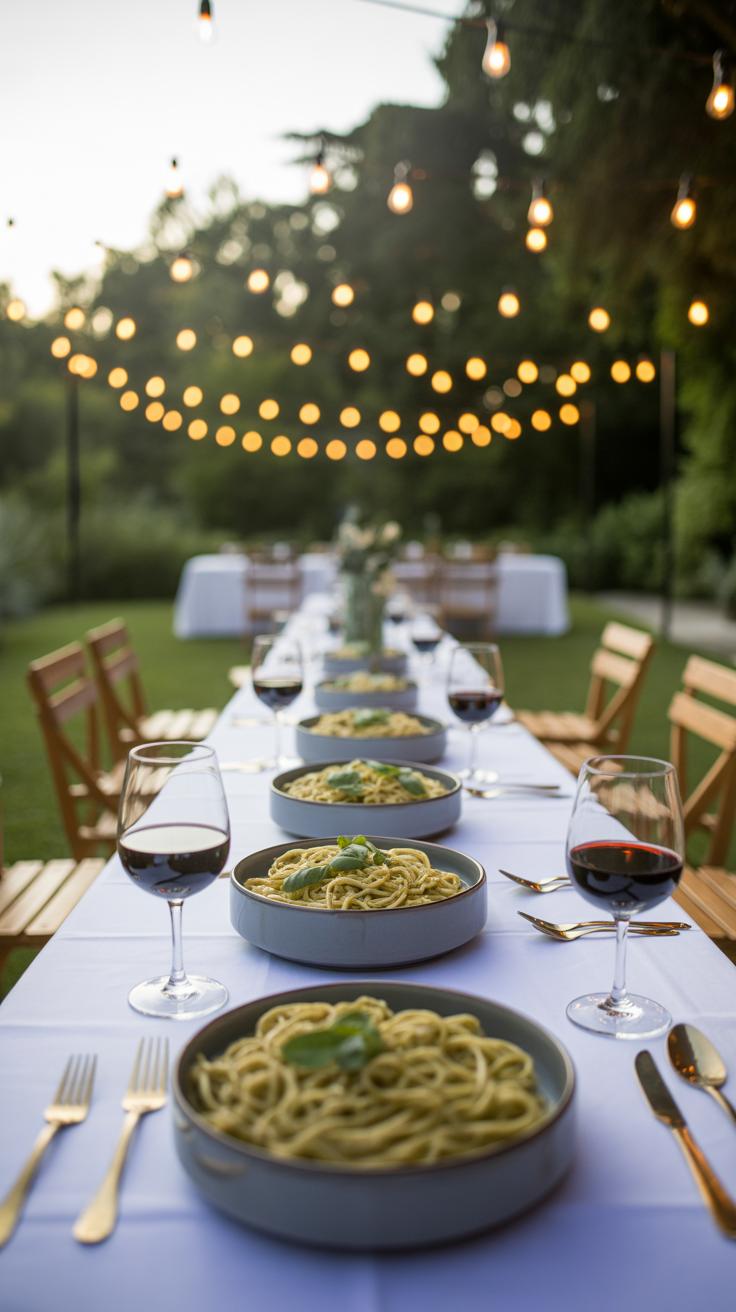Introduction
Summer is a great time to enjoy fresh, light, and tasty meals. Homemade pesto pasta is perfect for your summer gatherings. It uses fresh basil, garlic, pine nuts, cheese, and olive oil to create a flavorful sauce that pairs well with many types of pasta. In this article, we will explore the essentials of making pesto, the best pasta choices, and how to serve it for your events.
Making pesto pasta from scratch is easy and rewarding. You get to control the ingredients, making it better and healthier. We will guide you through recipes, offer tips on ingredient selection, and suggest creative variations to keep your summer gatherings enjoyable and delicious.
Understanding Pesto And Its Origins
What Is Pesto Sauce
Pesto is a sauce made from a handful of fresh ingredients blended together into a vibrant, fragrant mixture. At its core, traditional pesto includes fresh basil leaves, garlic, pine nuts, parmesan cheese, and olive oil. These ingredients combine simply—no cooking involved—to create a sauce that bursts with flavor and freshness. Typically, the ingredients are crushed together with a mortar and pestle, allowing the aromas to mix naturally, but nowadays, a food processor often makes this easier, though some argue it loses a bit of the original texture.
The simplicity of pesto is part of its charm. Its bright green color and punchy taste come almost entirely from fresh basil and raw garlic, with the pine nuts adding a subtle crunch and nuttiness, rounded out by the salty, umami cheese. Mixing olive oil completes the recipe, making pesto rich enough to coat pasta effortlessly yet fresh enough for summer dishes. The method highlights fresh, raw ingredients, which keeps the sauce lively and vibrant.
History Of Pesto And Its Variants
The word “pesto” comes from the Italian verb “pestare,” meaning to pound or crush. This gives a clue—pesto dates back to Liguria, a coastal region in northwest Italy. It likely evolved from ancient recipes where herbs were crushed into sauces, possibly even before basil became the star ingredient. Some historians suggest the Romans made similar mixtures with herbs, cheese, and nuts.
Traditional pesto alla genovese is the most famous version. It sticks to basil, pine nuts, garlic, parmesan or pecorino cheese, and olive oil. But as pesto spread throughout Italy, other regional variations appeared. For example, pesto alla trapanese from Sicily substitutes almonds for pine nuts and includes tomatoes, giving it a different flavor profile yet maintaining that crushed-herb essence.
Looking at pesto makes you wonder how simple, local ingredients can evolve into diverse culinary traditions. The sauce carries centuries of history but remains fresh and adaptable. It’s a dish tied closely to place and season—a snapshot of Italian coastal life captured in each spoonful.
Choosing The Right Ingredients For Homemade Pesto
Selecting Fresh Basil And Nuts
When making pesto, fresh basil is your starting point. Look for leaves that are bright green and unwilted—darker spots or yellowing can signal age or poor quality. Sometimes, basil can have a slight bitterness if it’s past peak freshness or grown in less-than-ideal conditions. So, picking basil harvested recently, maybe from a farmer’s market or your garden, can make a noticeable difference.
Now, about the nuts: pine nuts are classic but pricey, and honestly, they can taste a bit bitter if over-roasted or rancid. If you want to avoid that, try gently toasting them just until fragrant, not browned. Alternatively, almonds or even walnuts can step in nicely, bringing their own subtle flavors. Almonds often add a milder, creamier texture to the pesto. Just keep an eye on the nuts’ freshness—old nuts can turn the sauce unpleasant.
Cheese And Olive Oil Choices
Cheese transforms pesto from just herbal and nutty to something more savory and rich. Parmesan, or Parmigiano-Reggiano if you want to be a bit fancy, is probably the go-to. It offers a balanced saltiness and nuttiness. Pecorino Romano is sharper, tangier, and saltier, making for a different, bolder pesto experience. You might even blend the two for a nuanced profile, if you’re feeling experimental.
Olive oil—picking the right olive oil feels like a ritual. Extra virgin olive oil is best for pesto; its fruitiness complements basil well. But not every extra virgin olive oil fits perfectly. Some can be too bitter or peppery, overpowering the other ingredients. Tasting a few brands will help you find one that’s fruity and smooth, not aggressive. This choice subtly shapes your pesto’s character, so don’t rush it.
Preparing Pesto Pasta Step By Step
Making Classic Pesto Sauce
Start with fresh basil leaves—about two cups, packed. If you’re using a mortar and pestle, gently bruise the leaves first to release their aroma. Then, add a handful of pine nuts, some coarse salt, and a few cloves of garlic. Grinding these together carefully gives you that rustic, slightly chunky texture that food processors tend to smooth out too much. This step takes some patience; it’s about feeling when the paste starts to come together.
If using a food processor, pulse in short bursts. Too much blending heats up the mixture and dulls the bright green color. Slowly stream in good-quality olive oil to keep the sauce silky but not runny. Stir in freshly grated Parmesan or Pecorino right at the end—too early, and the cheese tends to clump.
The key is balance: not too oily, not too dry, with a fresh but mellow garlic kick. Taste as you go. Sometimes a little extra lemon juice can brighten things up, though purists might disagree.
Cooking And Tossing Pasta Properly
Boil your pasta in plenty of salted water—like the sea, they say—but don’t overdo it. You want it al dente, with a slight firmness that holds up against the pesto. Timing matters. Drain just before it’s fully cooked so it finishes in the sauce. Reserve some pasta water—it’s magic for adjusting consistency.
Toss the hot pasta immediately with your pesto, adding a splash of that reserved water if things seem dry. The starches in the water help the sauce cling better. Use a large bowl or back in the warm pot. Move quickly but gently; rough stirring can damage the delicate leaves and create bitterness.
Not too much pesto. You want every bite coated but not drowned. Taste again—maybe a pinch more cheese or a grind of black pepper? Experiment a little. The way you toss it can make or break the balance between herb, cheese, and pasta. Sometimes, it’s worth waiting a few minutes for the flavors to marry before serving.
Selecting Pasta Types For Pesto
Choosing the right pasta type can really shape your pesto experience. Texture and sauce cling-ability matter quite a bit. Pesto tends to be rich and oily, so pasta that traps or holds onto little pockets of sauce can make each bite more satisfying.
Short Pasta Options
Short pasta like penne, fusilli, and farfalle are popular with pesto for good reasons. Penne, with its tubes, captures pesto inside, so you get bursts of flavor. Fusilli’s spirals catch sauce on every curve, which spreads those basil and pine nut notes evenly. Farfalle, or bow ties, might seem simple but they offer nooks where pesto pools, giving a mix of coated and concentrated sauce.
That said, I sometimes find penne feels a bit dense with pesto if overdone. Fusilli tends to feel lighter, almost playful with pesto’s texture, which I prefer on a summer afternoon. Farfalle is versatile—you can toss it in big salads too, which makes it multi-purpose.
Long And Twisted Pasta
Long pasta takes pesto in a different direction. Spaghetti works fine, though the sauce might slide off a bit, making the experience less clingy than you’d want. But then again, sometimes you want just a hint of pesto in each bite, and spaghetti does that well.
Twisted options like trofie or trenette are more traditional matches for pesto, especially with Ligurian recipes. Trofie, with its small, thin twists, hold sauce impressively without becoming heavy. Trenette performs similarly, catching pesto in every groove and giving texture to each mouthful. Both feel authentic and a little more rustic, which can be charming for summer meals.
Have you noticed how the shape subtly influences the feel of a dish? It’s almost as if pasta types have personalities. Choosing one because it suits your mood or the occasion can add an unexpected layer to dinner.
Creative Variations To Try With Pesto Pasta
One easy way to keep pesto pasta interesting is by switching up the nuts and herbs in your pesto. Instead of the classic pine nuts, try walnuts or almonds for a different texture and taste. Walnuts bring a slightly bitter, earthy note, which can contrast nicely with a lemony pesto. Almonds, on the other hand, offer a mild sweetness that softens the overall flavor, making it a bit more delicate. You might even experiment with combining nuts—like half walnuts, half almonds—to find your favorite balance.
Herbs don’t always have to be basil. Parsley can add a fresh, grassy flavor that’s less sweet, while mint introduces a surprising coolness that works well if you’re aiming for something a little lighter. I’ve once tried a mint and walnut pesto that I wasn’t sure about at first, but it actually turned out refreshing, especially with grilled shrimp.
Speaking of additions, pesto pasta serves as a great canvas for vegetables and proteins. Toss in halved cherry tomatoes or roasted bell peppers to brighten the dish with some acidity and color. For proteins, grilled chicken or sautéed shrimp can make the meal more filling without overwhelming the pesto’s flavors. Sometimes, I add sautéed mushrooms for an earthiness that pairs well with pesto’s richness.
The key is to think about what flavors you want to highlight or balance. Do you want brightness, creaminess, or a bit of tang? There’s room to play. So, why stick to the usual when your pesto pasta can surprise everyone at the table with just a few twists?
Tips For Storing And Serving Pesto Pasta
Keeping Pesto Fresh
Homemade pesto can lose its bright color and fresh taste quickly if stored incorrectly. To keep it vibrant, try to store your pesto in an airtight container in the fridge. A little trick is to drizzle a thin layer of olive oil on top before sealing—it helps prevent oxidation. This method usually keeps the pesto fresh for about 3 to 5 days.
Freezing pesto is also an option if you want to save it longer. You can freeze it in ice cube trays for easy portioning. Once frozen, transfer the cubes to a zip-top bag and use within a few months. The texture might change a bit after thawing, but the flavor generally stays intact. Just let it thaw gradually in the fridge.
One thing I’ve noticed is that pesto stored with cheese mixed in tends to have a shorter fridge life, so if you want to stretch how long it lasts, consider adding cheese fresh when serving.
Serving Suggestions For Gatherings
Serving pesto pasta at a gathering can be simple and still feel like a treat. Present the pasta warm but not piping hot to keep the sauce fresh and flavorful. A large serving bowl with a bit of extra pesto on the side invites guests to add more as they please.
For garnishes, try these ideas:
– A sprinkle of toasted pine nuts or chopped walnuts adds crunch
– A little grated Parmesan or pecorino for that punch of saltiness
– Fresh basil leaves to brighten the presentation and flavor
– A few cherry tomatoes or roasted veggies on the side for color and balance
Pairing pesto pasta with a crisp white wine or a light salad with lemony dressing can complement the dish well. Still, I’ve served it alongside grilled chicken or shrimp when the crowd wanted something heartier. It’s flexible. Does your crowd prefer something simpler or with lots of toppings? Either way, pesto pasta is welcoming at the table.
Health Benefits Of Pesto Pasta
Fresh Ingredients And Nutrients
Pesto pasta isn’t just tasty—it’s packed with nutrients from the fresh ingredients it uses. Take basil, the star of most pestos. It’s rich in vitamin K, which helps with blood clotting and bone health. Basil also carries antioxidants that might help reduce inflammation in your body. Then there’s garlic, often added to pesto, which has compounds known to support immune function. Lemon juice brings in vitamin C, lending a subtle brightness and a dose of antioxidants as well.
When you make pesto with fresh herbs and nuts, you’re tapping into a range of vitamins like vitamin E and minerals such as magnesium and calcium. These play quietly behind the scenes, supporting everything from your heart to your skin. You might not think about these benefits while digging into your pasta, but that green sauce brings more than flavor to the table.
Healthy Fats In Olive Oil And Nuts
The olive oil in pesto is not just any fat—it’s mostly monounsaturated fat, which tends to be good for your heart. It can help lower bad cholesterol levels without messing with the good ones. Plus, it contains antioxidants like polyphenols that might protect your cells from damage. That’s probably why Mediterranean diets, rich in olive oil, often get talked about for health.
Then, there are the nuts. Pine nuts are common, but walnuts or almonds work too. These nuts add a dose of healthy fats, including omega-3s in some cases, which are linked to brain health and reduced inflammation. They also bring protein and fiber, making pesto pasta feel more balanced than just carbs on a plate.
It’s kind of interesting—pesto pasta offers a way to enjoy fats that don’t weigh you down or feel greasy, especially on a hot summer day. The fats here nourish rather than harm, but like anything, moderation matters. Still, having a bowl of pesto pasta at your summer gathering is probably not just indulgence; it’s a choice that carries some nutritional upside.
Common Mistakes To Avoid When Making Pesto Pasta
When making pesto pasta, a few mistakes often slip under the radar but really change the outcome. One of the biggest culprits is using poor quality ingredients. Fresh herbs like basil lose their punch if they’re a bit wilted or old. The same goes for cheese—parmesan that’s pre-grated and sitting in your fridge won’t give the same flavor or texture as freshly grated. And olive oil? That’s not just filler; it brings the whole thing together, so using a cheap one can flatten the taste quickly. I’ve tried pesto with less-than-stellar oil before, and there’s just this dull feeling about it that’s hard to fix later.
Then, there’s the issue of overcooking pasta. Pasta should be al dente—firm but not hard, not mushy. When it’s too soft, pesto pasta turns into a clumpy, soggy mess rather than a fresh, lively dish.
Mixing pesto and pasta isn’t simply dumping one into the other either. You want to toss pasta off the heat, maybe even save a bit of pasta water to loosen the sauce. Stirring pesto in while the pasta is still very hot can separate the oil, leaving you with oily pasta and clumps of pesto rather than a smooth coat. Trust me, stirring gently and gradually makes all the difference, especially if you’re serving right away.
- Choose fresh basil, good-quality parmesan or pecorino, and extra virgin olive oil to preserve flavor
- Cook pasta just until al dente and drain promptly
- Mix pesto off the heat, adding reserved pasta water slowly for better texture
- Aim for gentle tossing, not vigorous stirring, to avoid clumping or oily patches
Are you rushing the mixing part? Sometimes the temptation to finish quickly bruises the whole dish.
Hosting Summer Gatherings With Pesto Pasta
Pesto pasta works great as a main dish for summer get-togethers, but it doesn’t have to stand alone. Think of it as a simple, flavorful centerpiece that invites variety in your menu. When you’re hosting, you might want to pair it with something contrasting to balance the fresh, herbaceous notes of pesto. For example, a bright, crisp salad with ingredients like cherry tomatoes, cucumbers, or even watermelon can be refreshing alongside the pasta.
Also, consider grilled vegetables or a light protein like lemon-roasted chicken or shrimp. These options won’t overpower the pesto’s boldness but add substance without feeling heavy. People tend to enjoy sharing plates at summer parties, so serving pesto pasta family-style encourages a laid-back vibe.
Drinks? Go for chilled white wines, sparkling water with fresh citrus, or perhaps a summery spritz. The key is to keep things light and easy. For dessert, simple fruit-based sweets, like a berry tart or lemon sorbet, tend to feel just right after pesto’s herbal richness.
Now, about serving temperature. Warm pesto pasta works well when it’s freshly made and still comforting, especially as the sun sets and the evening cools down. Cold or room temperature pesto pasta can be a hit earlier in the day, maybe as part of a picnic-style spread. It’s surprisingly versatile. Presentation-wise, a rustic bowl with a drizzle of olive oil and sprinkled pine nuts can make even the simplest pesto pasta look inviting. It’s about inviting your guests to dig in, not impressing them with complicated plating.
Conclusions
Homemade pesto pasta brings vibrant taste and simplicity to your summer table. Fresh basil and quality ingredients make a big difference in the flavor. By preparing your pesto and pasta at home, you get a dish that is flavorful, fresh, and sure to impress your friends and family.
Whether you stick to classic pesto or try variations, pesto pasta is a versatile dish for warm weather. It’s quick to prepare and easy to customize. Make your summer gatherings special with these tasty homemade pesto pasta recipes and enjoy every bite.

